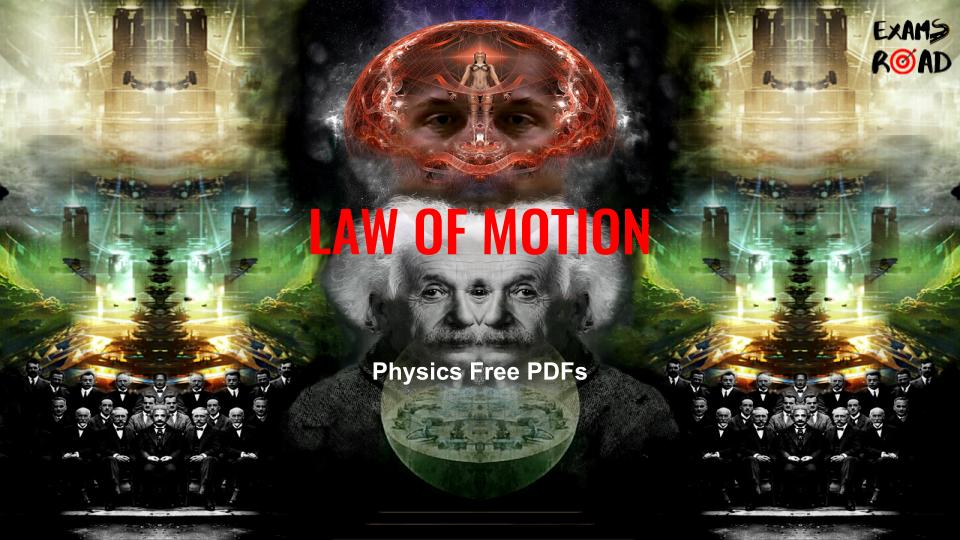The National Eligibility cum Entrance Test (NEET) is the only entrance test for admission to an MBBS course in India. This is why the difficulty level of the examination is high and only those who have prepared for the examination seriously can clear it. Since the examination for 2020 has been postponed several times, the need to stay focused has increased. Students preparing for NEET are already aware of the concept of ‘focused study’. However, to clear NEET 2021, one must have a solid preparation strategy in place and stay motivated throughout the preparation phase.
NEET 2020 Exam Pattern
The question paper was objective question-based with a total of 180 questions, 45 questions each from Physics, Chemistry and 90 questions from Biology section. Candidates were recommended to practise previous years’ question papers. With its regular practice, students were easily able to get acquainted with the pattern and format of the question paper
[su_heading]NEET 2020 Subject-Wise Analysis – Physics [/su_heading]
Physics was reasoned as easier compared to previous years with questions being asked from NCERT syllabus for NEET. Mostly, questions were based on NCERT and computations were not as lengthy. Most questions appeared from the Mechanics unit.
NEET Chapter Wise Weightage 2020 for Physics
| Physics Chapters and topics | Average no. of Questions from the chapter | Weightage of the chapter and topic (In percentage) |
|---|---|---|
| Centre of Mass | 1 | 1% |
| Gravitation | 2 | 3% |
| Kinematics | 1 | 2% |
| Laws of Motion | 3 | 7% |
| Mechanics of Solids & Fluids | 2 | 3% |
| Oscillations | 1 | 3% |
| Rotational motion | 1 | 1% |
| System of Particle & Rigid Body | 3 | 7% |
| Units and Measurement | 1 | 2% |
| Waves | 2 | 4% |
| Work, Energy and power | 2 | 4% |
| Kinetic Theory of Gases | 1 | 2% |
| Properties of Bulk Matter | 1 | 3% |
| Thermal Properties of Matter | 1 | 2% |
| Thermodynamics | 3 | 7% |
| Magnetic Effect of Current & Magnetism | 3 | 6% |
| Electric Charge & Field | 1 | 2% |
| Electromagnetic Wave | 1 | 1% |
| Electrostatic Potential & Capacitance | 1 | 2% |
| Electrostatics | 1 | 3% |
| Alternating Current | 1 | 3% |
| Current Electricity | 3 | 6% |
| Electromagnetic Induction | 1 | 2% |
| Semiconductor Electronics | 3 | 6% |
| Atoms & Nuclei | 2 | 5% |
| Dual Nature of Radiation and Matter | 2 | 4% |
| Ray Optics & Optical Instrument | 3 | 5% |
| Wave optics | 2 | 4% |
NEET 2020 Question Paper Analysis – Physics
| Class | Chapter name | Level of Difficulty | ||
| Easy | Average | Challenging | ||
| Class 11 | Mechanics | 10 | 1 | 1 |
| Heat & Thermodynamics | 3 | 2 | 0 | |
| Waves | 0 | 0 | 1 | |
|
Class 12 |
Magnetism | 2 | 4 | 0 |
| Modern Physics | 6 | 1 | 1 | |
| Electricity | 3 | 6 | 0 | |
| Optics | 1 | 2 | 1 | |
| Total Questions | 45 | |||
[su_heading]NEET 2020 Subject-Wise Analysis – Chemistry[/su_heading]
The chemistry section could be categorized between easy and average. Typically, 15 questions are asked from each of the Chemistry sections – Physical, Organic and inorganic. However, this time around, fewer questions (12) were asked from the Inorganic section while the most number of questions were asked from Organic chemistry section (18). Again, NCERT-based questions dominated in the chemistry section as well.
NEET Chapter Wise Weightage 2020 for Chemistry
| Chemistry Chapters and topics | Average no. of Questions from the chapter | Weightage of the chapter and topic (In percentage) |
|---|---|---|
| Inorganic Chemistry-I | 22% | |
| Chemical Bonding | 4 | 9% |
| p-block | 3 | 7% |
| Periodic Table & Periodicity in Properties | 2 | 4% |
| Hydrogen | 1 | 2% |
| s-block | 1 | 3% |
| Inorganic Chemistry-II | 12% | |
| Coordination Compounds | 3 | 6% |
| d-block & f-block Elements | 2 | 4% |
| Metallurgy | 1 | 2% |
| Qualitative Analysis | 1 | 2% |
| Organic Chemistry-I | 8% | |
| Hydrocarbons | 2 | 4% |
| General Organic Chemistry | 2 | 5% |
| Organic Chemistry-II | 26% | |
| Haloalkane | 1 | 2% |
| Aldehydes, Ketones and Carboxylic Acids | 2 | 3% |
| Polymer | 1 | 2% |
| Alkyl Halide, Alcohol & Ether | 2 | 4% |
| Aromatic Compounds | 3 | 6% |
| Biomolecules | 2 | 4% |
| Carbonyl Compounds | 2 | 4% |
| Organic Compounds containing nitrogen | 2 | 3% |
| Chemistry in Everyday Life | 2 | 3% |
| Environmental chemistry | 1 | 2% |
| IUPAC & Isomerism | 2 | 4% |
| Practical Organic Chemistry | 1 | 2% |
| Physical Chemistry-I | 17% | |
| Atomic Structure & Nuclear Chemistry | 1 | 3% |
| Chemical Equilibrium | 1 | 3% |
| Ionic Equilibrium | 2 | 4% |
| Redox Reactions | 1 | 2% |
| Gaseous State | 1 | 3% |
| Mole Concept | 2 | 5% |
| Thermodynamics and Thermochemistry | 1 | 3% |
| Physical Chemistry-II | 15% | |
| Chemical Kinetics | 2 | 4% |
| Electrochemistry | 1 | 3% |
| Solid State | 1 | 3% |
| Solution & Colligative Properties | 2 | 4% |
| Surface Chemistry | 1 | 2% |
NEET 2020 Question Paper Analysis – Chemistry
| Class | Section | Level of Difficulty | ||
| Easy | Average | Challenging | ||
| Class 11 | Physical Chemistry | 1 | 3 | 3 |
| Organic Chemistry | 2 | 2 | 0 | |
| Inorganic Chemistry | 3 | 4 | 3 | |
|
Class 12 |
Physical Chemistry | 3 | 5 | 1 |
| Organic Chemistry | 3 | 5 | 1 | |
| Inorganic Chemistry | 2 | 3 | 1 | |
| Total Questions | 45 | |||
[su_heading]NEET 2020 Subject-Wise Analysis – Botany[/su_heading]
A total of 43 questions were asked from the Botany section. This section was considered to be challenging compared to previous trends. Only 2 questions were beyond the scope of NCERT. Most questions were asked from the Plant physiology unit.
NEET Chapter Wise Weightage 2020 for Botany
| Biology Chapters and topics | Average no. of Questions from the chapter | Weightage of the chapter and topic (In percentage) |
|---|---|---|
| Botany | ||
| Plant Diversity | 7 | 12% |
| Plant Anatomy | 2 | 4% |
| Plant Morphology | 4 | 7% |
| Cell Biology & Cell Division | 6 | 10% |
| Bio-molecule | 2 | 3% |
| Plant Physiology | 8 | 13% |
| Plant Reproduction | 5 | 9% |
| Genetics & Biotechnology | 15 | 24% |
| Biology in Human Welfare | 1 | 2% |
| Ecology | 10 | 16% |
| Total | 100% | |
NEET 2020 Question Paper Analysis – Botany
| Class | Chapter name | Level of Difficulty | ||
| Easy | Average | Challenging | ||
| Class 11 | Plant Physiology | 3 | 2 | 4 |
| Cell and cell cycle | 1 | 1 | 4 | |
| Structural organization of plants | 3 | 0 | 2 | |
| Diversity of Life | 1 | 3 | 1 | |
|
Class 12 |
Genetics | 2 | 1 | 4 |
| Ecology | 2 | 2 | 3 | |
| Biology in Human welfare | 0 | 1 | 1 | |
| Reproduction and sexual reproduction | 1 | 1 | 0 | |
| Total Questions | 43 | |||
[su_heading]NEET 2020 Subject-Wise Analysis – Zoology[/su_heading]
Zoology fared moderately on the difficulty meter. Some questions were twisted. 47 questions appeared from the Zoology section. Some questions required interlinking of concepts while some others assessed application capabilities. Most questions appeared from the Human Physiology unit.
NEET Chapter Wise Weightage 2020 for Zoology
| Zoology | ||
| Animal Diversity | 3 | 10% |
| Animal Tissue | 1 | 3% |
| Structural Organisation in animals | 1 | 2% |
| Human Physiology | 13 | 45% |
| Human Reproduction & Reproductive Health | 5 | 18% |
| Origin & Evolution | 3 | 10% |
| Animal husbandry | 1 | 3% |
| Human Health & Diseases | 3 | 9% |
| Total | 100% | |
NEET 2020 Question Paper Analysis – Zoology
| Class | Chapter name | Level of Difficulty | ||
| Easy | Average | Challenging | ||
| Class 11 | Human Physiology | 1 | 7 | 4 |
| Biomolecules | 3 | 2 | 1 | |
| Animal Kingdom | 2 | 2 | 1 | |
| Structural organization of animals | 1 | 0 | 1 | |
|
Class 12 |
Animal husbandry and Biotechnology | 3 | 4 | 3 |
| Human Reproduction and reproductive health | 0 | 2 | 2 | |
| Evolutions theories and evidences | 3 | 0 | 1 | |
| Human Health and diseases | 0 | 3 | 1 | |
| Total Questions | 47 | |||

















